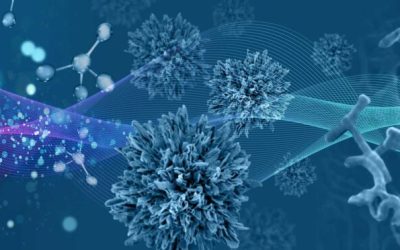Publications
Exploring the Future of Functional Nanomaterials: Polymer-Patched Plasmonic Nanoparticles
A new publication from COMPASS researchers, including Chansong Kim and colleagues, highlights exciting advancements at the intersection of surface patchiness design and plasmonic nanoparticles—a rapidly emerging area in materials science and nanotechnology. Published...
Frontiers of Innovation: COMPASS & the Future of Tech
The World Economic Forum just released its Top 10 Emerging Technologies for 2025—and we’re excited to see familiar territory. It’s especially compelling that two of these breakthrough technologies, nanozymes and structural battery composites, are actively being...
Liquid metal particles can self-assemble intoelectronics
Self-assembling electronics made from liquid metal particles could provide a cheaper way of manufacturing computer chips, simply by harnessing the basic physics of how fluids flow through tiny structures. “The cost of entry in manufacturing electronics and building...
Revolutionizing Electronics: Prof. Martin Thuo’s Research on Self-Assembling Molecular Adducts
Prof. Martin Thuo, COMPASS Deputy Director and Professor at NC State, shares groundbreaking insights into the self-assembly of molecular adducts. This innovative approach, co-funded by COMPASS, has the potential to transform the future of electronics manufacturing,...
Professors Lahann and Pena-Francesch Develop Squid-Inspired Screen That Displays Images Without Electronics!
The team of Prof. Lahann and Prof. Pena-Francesch have developed a flexible screen inspired by squids that can store and display encrypted images using magnetic fields instead of electronics. This innovative device allows images to be revealed publicly with a standard...
Nothing is everything: How hidden emptiness can define the usefulness of filtration materials
Prof. Qian Chen, right, and chemistry graduate student Falon Kalutantirige worked with multiple technologies, including Transmission and Scanning Transmission Electron Microscopy at the Materials Research Laboratory's Supercon facility to image nanovoids within filter...
Largest U.S. investment in particle self-assembly seeks to deliver on nanotechnology’s promise
With applications in transportation, energy, health care and more, the center includes African universities and creates opportunities for overlooked talent in the U.S. Covered on Michigan Engineering News, COMPASS U-M Press Release, NSF announces $120 million in...






